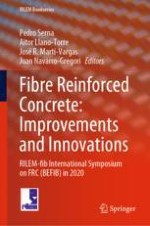2021 | OriginalPaper | Chapter
Evaluation of the Self-healing Capability of Ultra-High-Performance Fiber-Reinforced Concrete with Nano-Particles and Crystalline Admixtures by Means of Permeability
Authors : Hesam Doostkami, Marta Roig-Flores, Alberto Negrini, Eduardo J. Mezquida-Alcaraz, Pedro Serna
Published in: Fibre Reinforced Concrete: Improvements and Innovations
Publisher: Springer International Publishing
Activate our intelligent search to find suitable subject content or patents.
Select sections of text to find matching patents with Artificial Intelligence. powered by
Select sections of text to find additional relevant content using AI-assisted search. powered by
